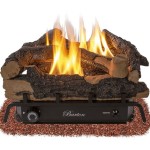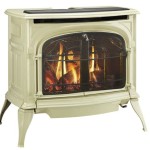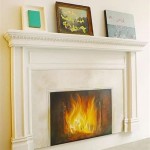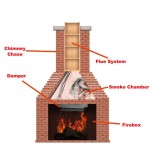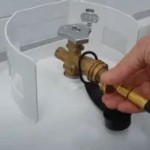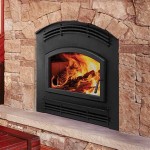Victorian Bedroom Fireplace Surrounds: A Guide to Style, Materials, and Considerations
Victorian bedroom fireplace surrounds represent a significant element of interior design during the 19th century. The Victorian era, spanning from 1837 to 1901, was characterized by opulence, intricate detailing, and a revival of historical styles. Fireplaces, beyond their functional purpose as heating sources, became focal points of a room, reflecting the homeowner's taste and social standing. This article explores the characteristics of Victorian bedroom fireplace surrounds, examining their styles, materials, key features, and the factors to consider when incorporating them into a contemporary setting.
During the Victorian period, the concept of the bedroom evolved. It transitioned from a purely functional sleeping space to a more private and personalized sanctuary. The inclusion of a fireplace within the bedroom further emphasized this shift, offering not only warmth but also a sense of comfort and elegance. The fireplace surround, acting as a decorative frame for the firebox, became an important element in achieving the desired aesthetic. The style of the fireplace surround often reflected the broader architectural trends of the era, including Gothic Revival, Italianate, and Queen Anne.
Key Styles of Victorian Bedroom Fireplace Surrounds
The Victorian era encompassed a variety of design movements, each leaving its mark on fireplace surround aesthetics. Understanding these distinct styles is essential for selecting an appropriate surround that complements the overall design of the bedroom.
Gothic Revival: This style drew inspiration from medieval architecture, characterized by pointed arches, trefoil motifs, and elaborate carvings. Gothic Revival fireplace surrounds often featured dark woods, such as mahogany or walnut, and could incorporate elements like quatrefoils, crockets, and finials. The overall impression was one of grandeur and historical reference. The size and scale of these surrounds were often substantial, reflecting the architectural principles of the Gothic period.
Italianate: Emphasizing symmetry and classical proportions, Italianate fireplace surrounds featured balanced designs, often incorporating pilasters, pediments, and decorative friezes. Marble was a common material choice, lending a sense of luxury and refinement. Italianate surrounds tended to be more restrained than Gothic Revival examples, focusing on elegant lines and harmonious proportions. Common decorative motifs included floral patterns, scrolls, and geometric shapes. The use of light-colored marbles, such as Carrara or Statuario, was prevalent in creating a bright and airy feel within the bedroom.
Queen Anne: This popular style was characterized by asymmetry, a mix of materials, and an emphasis on decorative detailing. Queen Anne fireplace surrounds often featured elaborate mantels with intricate carvings, brackets, and shelves. The use of stained glass and decorative tiles was also common. These surrounds often combined different types of wood, such as cherry, oak, and maple, to create visual interest. The overall effect was one of warmth, charm, and a slightly eclectic aesthetic. Sunburst motifs, spindle work, and floral garlands were frequently incorporated into the design.
Arts and Crafts: Towards the end of the Victorian era, the Arts and Crafts movement emerged as a reaction against mass-produced goods and industrialization. Arts and Crafts fireplace surrounds emphasized handcrafted details, natural materials, and simple, functional designs. These surrounds often featured oak or other hardwoods with exposed joinery, minimal ornamentation, and a focus on the inherent beauty of the materials. Tiles, often featuring nature-inspired motifs, were frequently incorporated into the design. The overall aesthetic was one of honesty, authenticity, and a connection to the natural world.
Common Materials Used in Victorian Fireplace Surrounds
The choice of materials played a crucial role in defining the character and style of Victorian fireplace surrounds. The materials reflected not only the aesthetic preferences of the era but also the technological advancements in manufacturing and production.
Marble: Marble was a highly prized material, associated with luxury and sophistication. It was used extensively in Italianate and other styles, valued for its beauty, durability, and ability to be carved into intricate designs. White marble, such as Carrara or Statuario, was popular for its clean and elegant look, while colored marbles, such as Rosso Verona or Verde Antico, added a touch of richness and drama. The veining patterns in marble provided unique visual interest, making each fireplace surround a one-of-a-kind piece.
Wood: Wood was a versatile and widely used material, offering a range of options in terms of color, texture, and carving possibilities. Mahogany, walnut, oak, and cherry were all popular choices, each imparting a distinct character to the fireplace surround. Dark woods, such as mahogany and walnut, were often favored for Gothic Revival styles, while lighter woods, such as oak and cherry, were more common in Queen Anne and Arts and Crafts designs. Intricate carvings, such as floral motifs, scrolls, and geometric patterns, were often applied to wooden fireplace surrounds, demonstrating the skill of the craftsmen.
Cast Iron: Cast iron was a durable and relatively inexpensive material, making it a popular choice for more modest homes. Cast iron fireplace surrounds were often decorated with embossed patterns, such as flowers, leaves, and geometric designs. They could be painted or enameled in a variety of colors, allowing for customization and coordination with the overall room decor. Cast iron surrounds were particularly well-suited for coal-burning fireplaces, as they could withstand high temperatures and provide efficient heat distribution.
Tile: Decorative tiles were frequently incorporated into Victorian fireplace surrounds, adding color, pattern, and visual interest. Tiles could be used to create a surround, facing, or hearth. Encaustic tiles, which featured intricate designs inlaid with different colored clays, were particularly popular. Other types of tiles, such as Majolica and Delftware, were also used to create vibrant and decorative surfaces. Tile designs often reflected the prevailing aesthetic trends, including floral motifs, geometric patterns, and scenes from nature.
Considerations for Incorporating Victorian Fireplace Surrounds Today
Integrating a Victorian fireplace surround into a contemporary bedroom requires careful consideration to ensure that it complements the existing architecture and design elements. While the historical charm of a Victorian surround can add character and elegance to a modern space, it is essential to strike a balance between the old and the new.
Scale and Proportion: The size and scale of the fireplace surround should be appropriate for the size of the bedroom. A massive Gothic Revival surround might overwhelm a small room, while a delicate Queen Anne surround could get lost in a large space. Careful measurements and consideration of the room's dimensions are essential to ensure a harmonious balance.
Style Compatibility: The style of the fireplace surround should complement the overall design aesthetic of the bedroom. A Victorian surround can work well in a room with traditional or transitional decor, but it might clash with a minimalist or ultra-modern space. Consider the existing furniture, lighting, and architectural details when selecting a fireplace surround.
Functionality: While Victorian fireplace surrounds were originally designed for wood-burning or coal-burning fires, many contemporary homes utilize gas or electric fireplaces. Ensure that the fireplace surround is compatible with the type of fireplace being used and that it meets all safety regulations. If restoring an original fireplace, consider if it will be used for actual fires or simply as a decorative element; structural repairs may be necessary if it will be used to burn fuel.
Restoration and Preservation: When working with an antique Victorian fireplace surround, it is important to prioritize restoration and preservation. Damage, such as cracks, chips, or missing pieces, should be repaired by a qualified professional. Avoid using harsh cleaning agents or abrasive materials that could damage the original finish. Preserve the historical integrity of the surround by using appropriate materials and techniques during the restoration process. This may involve researching period-accurate paint colors or sourcing replacement parts from antique dealers.
Color Palette: The color palette of the fireplace surround should coordinate with the overall color scheme of the bedroom. A white marble surround can create a bright and airy feel, while a dark wood surround can add warmth and depth. Consider the existing wall color, flooring, and furniture when selecting the color of the fireplace surround. Use paint charts from period-accurate colour palettes to ensure any painting work done is true to the Victorian era.
By carefully considering these factors, one can successfully incorporate a Victorian bedroom fireplace surround into a contemporary setting, adding a touch of historical charm and elegance to the space. The addition of the fireplace, and its carefully chosen surround, will become a focal point, enriching the atmosphere and creating a space that is both stylish and inviting.

Upcycled Cast Iron Fireplace Victorian Bedroom

20 Beautiful Fireplaces For A Small Living Space Victorian Bedroom Fireplace Home

Bedroom Fireplace Design Ideas Decor Advice Period Home Style

Painted Victorian Bedroom Fireplace 4230b Antique Co

Bedroom Fireplace Design Ideas Decor Advice Period Home Style

9 Ways To Make The Most Of A Bedroom Fireplace Houzz Ie

How Victorian Fireplaces Work Antique Fireplace Restoration

Buy Victorian 1897 Antique Bedroom Fireplace

Irishchimneypieces Com Victorian Bedroom Fireplace

The Beauty Of Cast Iron Fireplace Period Property
Related Posts


